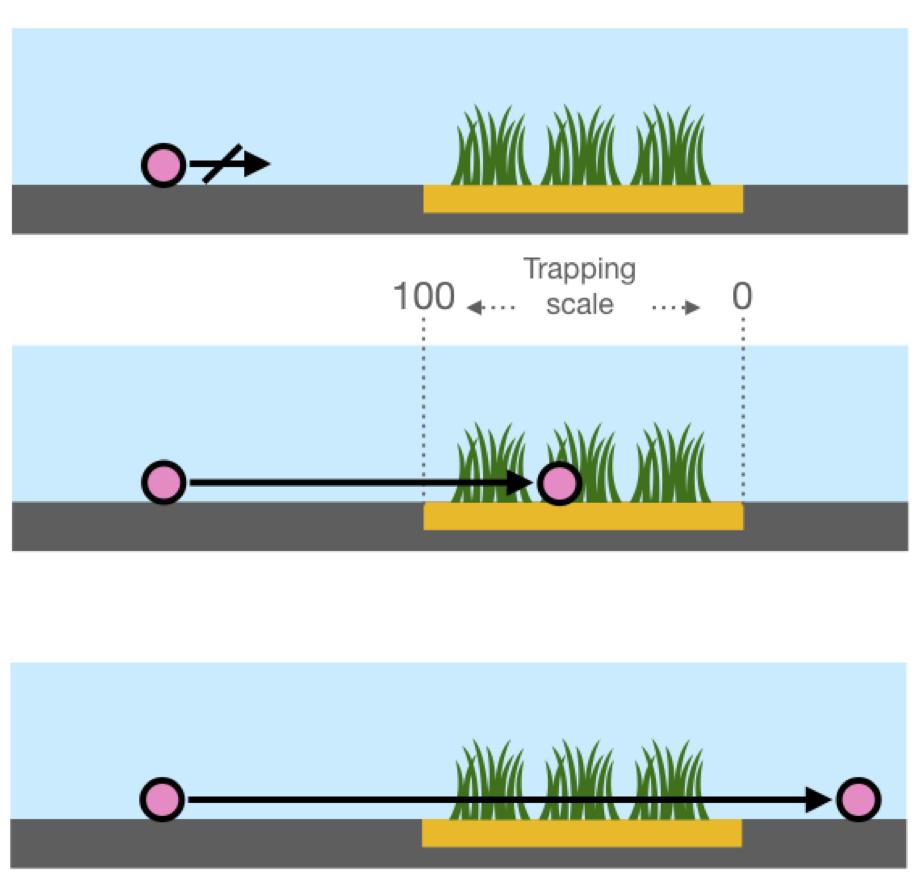Abstract
Marine canopies formed by seagrass and other coastal vegetated ecosystems could act as sinks of microplastics for being efficient particle traps. Here we investigated for the first time the occurrence of microplastic retention by marine canopies in a hydraulic flume under unidirectional flow velocities from 2 to 30 cm s-1.
We used as model canopy-forming species the seagrass Zostera marina with four canopy shoot density (0, 50, 100, 200 shoots m-2), and we used as microplastic particles industrial pristine pellets with specific densities from 0.90 to 1.34 g cm-3 (polypropylene PP; polystyrene PS; polyamide 6 PA; and polyethylene terephthalate PET). Overall, microplastics particles transported with the flow were retained in the seagrass canopies but not in bare sand. While seagrass canopies retained floating microplastics (PP) only at low velocities (< 12 cm s-1) due to a barrier created by the canopy touching the water surface, the retention of sinking particles (PS, PA, PET) occurred across a wider range of flow velocities.
Our simulations revealed that less dense sinking particles (PS) might escape from the canopy at high velocities, while denser sinking particles can be trapped in scouring areas created by erosive processes around the eelgrass shoots. Our results show that marine canopies might act as potential barriers or sinks for microplastics at certain bio-physical conditions, with the probability of retention generally increasing with the seagrass shoot density and polymer specific density and decreasing with the flow velocity.
We conclude that seagrass meadows, and other aquatic canopy-forming ecosystems, should be prioritized habitats in assessment of microplastic exposure and impact on coastal areas since they may accumulate high concentration of microplastic particles that could affect associated fauna.
Main finding: marine canopies with high shoot density might act as sinks for microplastics of high polymer density in areas of low flow velocity.












